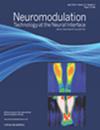A Clinical Care Pathway for Patients With Chronic Mechanical Low Back Pain Having Restorative Neurostimulation for Multifidus Muscle: Description, Patient Compliance, Clinical Outcomes, and Satisfaction in the First Two Years
IF 3.2
3区 医学
Q2 CLINICAL NEUROLOGY
引用次数: 0
Abstract
Objectives
Restorative neurostimulation for multifidus muscle is a novel therapy for chronic low back pain (CLBP). Optimal outcomes require interdisciplinary follow-up. We describe a clinical care pathway (CPW) for this therapy and report patient compliance, clinical outcomes, and patient satisfaction with the CPW.
Materials and Methods
This study aimed to develop, at a single center, a CPW with derivation, practical basis, description, and evolution. Included in the study were audits of 1) patient compliance with attendance over 24 months, 2) medical and paramedical attendance at the clinic, 3) clinical outcomes in terms of reductions in both patient and cohort disability (Oswestry Disability Index, ODI) and CLBP numeric rating score (NRS), and 4) adverse events; and a prospective cross-sectional survey of patient satisfaction with the CPW.
Results
A CPW that involved both preoperative and postoperative education and integrated interdisciplinary care was developed and incorporated into the clinical service with a dedicated clinic. In the two years under study, 172 patients attended the education session, and 92 proceeded to restorative neurostimulation for multifidus muscle therapy; 15 patients who had this therapy before the CPW also were incorporated into the CPW. Patient compliance with the pathway was 88% (95% CI 79%–94%) at 12 months. Attendance at the dedicated CPW clinic by the various subspeciality clinicians ranged between 74% and 100%. There were serial reductions in both ODI (38.9 [95% CI 35.9–41.9] to 24.7 (95% CI 21.1–28.3) and CLBP NRS (6.3 [95% CI 6.0–6.7] to 3.3 (95% 2.7–3.9) after 12 months; 76 of the 99 patients assessable (77%: 95% CI 67%–85%) had a minimally important clinical difference reduction in either ODI or pain NRS, whereas eight were unassessable. Patient satisfaction with the CPW was very high (mean 26.9; median 27, maximum 28).
Conclusions
The CPW facilitated clinical management and optimized outcomes in patients having restorative neurostimulation. Its design and delivery were very well accepted by patients.
多裂肌恢复性神经刺激治疗慢性机械性腰痛患者的临床护理途径:前两年的描述、患者依从性、临床结果和满意度
目的:多裂肌恢复性神经刺激是治疗慢性腰痛的一种新方法。最佳结果需要跨学科随访。我们描述了该疗法的临床护理途径(CPW),并报告了患者的依从性、临床结果和患者对CPW的满意度。材料与方法:本研究的目的是在一个单一的中心,建立一个有起源、有实践基础、有描述和进化的CPW。该研究包括以下审计:1)患者在24个月内的护理依从性,2)诊所的医疗和辅助医疗人员的护理,3)患者和队列残疾(Oswestry残疾指数,ODI)和CLBP数值评级评分(NRS)减少的临床结果,以及4)不良事件;以及对CPW患者满意度的前瞻性横断面调查。结果:一种包括术前和术后教育和综合跨学科护理的CPW被开发出来,并通过专门的诊所纳入临床服务。在两年的研究中,172名患者参加了教育课程,92名患者接受了多裂肌恢复性神经刺激治疗;在CPW之前接受过这种治疗的15例患者也被纳入CPW。12个月时,患者对该途径的依从性为88% (95% CI 79%-94%)。各个亚专科临床医生到专门的CPW诊所的就诊率在74%到100%之间。12个月后,ODI (38.9 [95% CI 35.9-41.9]至30.0 (95% CI 26.7-33.8)和CLBP NRS (6.3 [95% CI 6.0-6.7]至3.3(95% 2.7-3.9)均有连续下降;99例可评估患者中有76例(77%:95% CI 67%-85%)在ODI或疼痛NRS方面有最小程度的重要临床差异减少,而8例无法评估。患者对CPW的满意度非常高(平均26.9;中位数27,最大值28)。结论:CPW促进了恢复性神经刺激患者的临床管理并优化了预后。它的设计和交付都得到了患者的认可。
本文章由计算机程序翻译,如有差异,请以英文原文为准。
求助全文
约1分钟内获得全文
求助全文
来源期刊

Neuromodulation
医学-临床神经学
CiteScore
6.40
自引率
3.60%
发文量
978
审稿时长
54 days
期刊介绍:
Neuromodulation: Technology at the Neural Interface is the preeminent journal in the area of neuromodulation, providing our readership with the state of the art clinical, translational, and basic science research in the field. For clinicians, engineers, scientists and members of the biotechnology industry alike, Neuromodulation provides timely and rigorously peer-reviewed articles on the technology, science, and clinical application of devices that interface with the nervous system to treat disease and improve function.
 求助内容:
求助内容: 应助结果提醒方式:
应助结果提醒方式:


